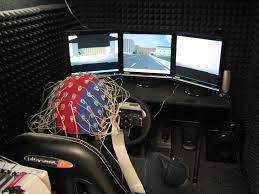Source: army.mil
ABERDEEN PROVING GROUND, Md. — A big data approach to neuroscience promises to significantly improve our understanding of the relationship between brain activity and performance.
To date, there have been relatively few attempts to use a big-data approach within the emerging field of neurotechnology. In this field, the few attempts at meta-analysis (analysis across multiple studies) combine only the results from individual studies rather than the raw data. A new study is one of the first to combine data across a diverse set of experiments to identify patterns of brain activity that are common across tasks and people.
The Army in particular is interested in how the cognitive state of Soldiers can affect their performance during a mission. If you can understand the brain, you can predict and even enhance cognitive performance.
Researchers from the U.S. Army Combat Capabilities Development Command’s Army Research Laboratory teamed with the University of Texas at San Antonio and Intheon Labs to develop a first-of-its-kind mega-analysis of brain imaging data–in this case electroencephalography, or EEG.
In the two-part paper, they aggregate the raw data from 17 individual studies, collected at six different locations, into a single analytical framework, with their findings published in a series of two papers in the journal NeuroImage (see Related Links below). The individual studies included in this analysis encompass a diverse set of tasks such simulated driving and visual search.
“The vast majority of human neuroscientific studies use a very small number of participants employed in very specific tasks,” said Dr. Jonathan Touryan, an Army scientist and co-author of the paper. “This limits how well the results from any single study can be generalized to a broader population and a larger range of activities.”
Mega-analysis of EEG is extremely challenging due to the many types of hardware systems (properties and configuration of the electrodes), the diversity of tasks, how different datasets are annotated, and the intrinsic variability between individuals and within an individual over time, Touryan said.
These sources of variability make it difficult to find robust relationships between brain and behavior. Mega-analysis seeks to address this by aggregating large, heterogeneous datasets to identify universal features that link neural activity, cognitive state and task performance.
Next-generation neurotechnologies will require a thorough understanding of this relationship in order to mitigate deficits or augment performance of human operators. Ultimately, these neurotechnologies will enable autonomous systems to better understand the Soldier and facilitate communications within multi-domain operations, he said.
To combine the raw data from the collection of studies, the researchers developed Hierarchical Event Descriptors (HED tags) — a novel labeling ontology that captures the wide range of experimental events encountered in diverse datasets. This HED tag system was recently adopted into the Brain Imaging Data Structure international standard, one of the most common formats for organizing and analyzing brain data, Touryan said.
The research team also developed a fully automated processing pipeline to perform large-scale analysis of their high-dimensional time-series data–amounting to more than 1,000 recording sessions.
Much of this data was collected over the last 10 years through the U.S. Army’s Cognition and Neuroergonomics Collaborative Technology Alliance and is now available in an online repository for the scientific community (see Related Links below). The U.S. Army continues to use this data to develop human-autonomy adaptive systems for both the Next Generation Combat Vehicle and Soldier Lethality Cross-Functional Teams.
